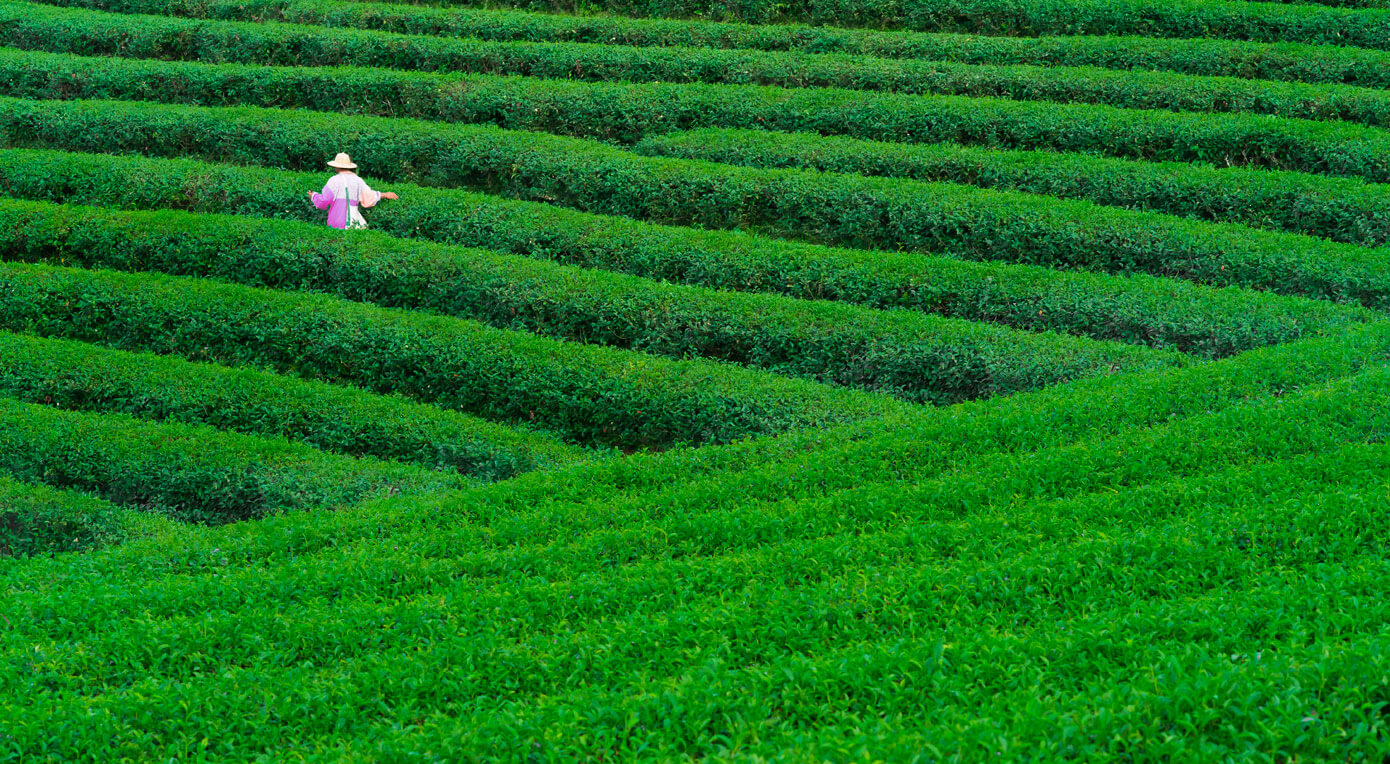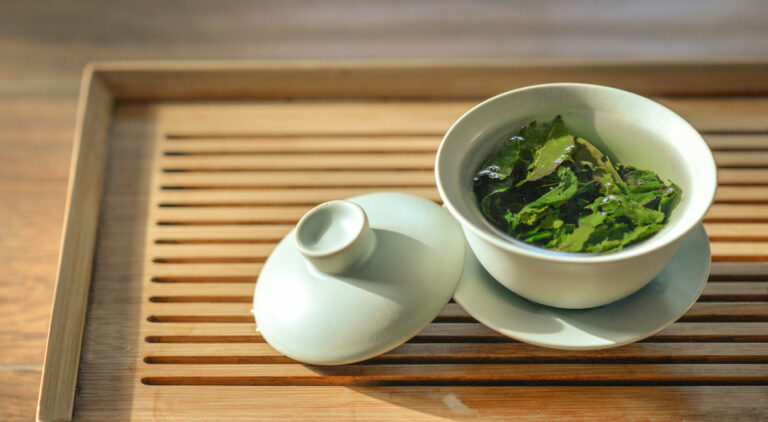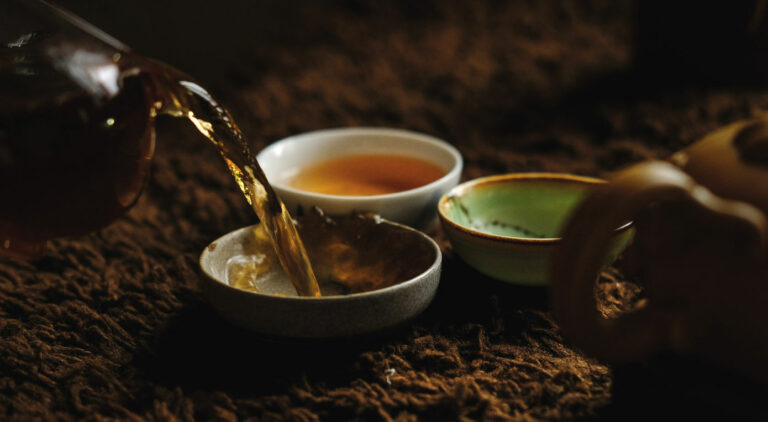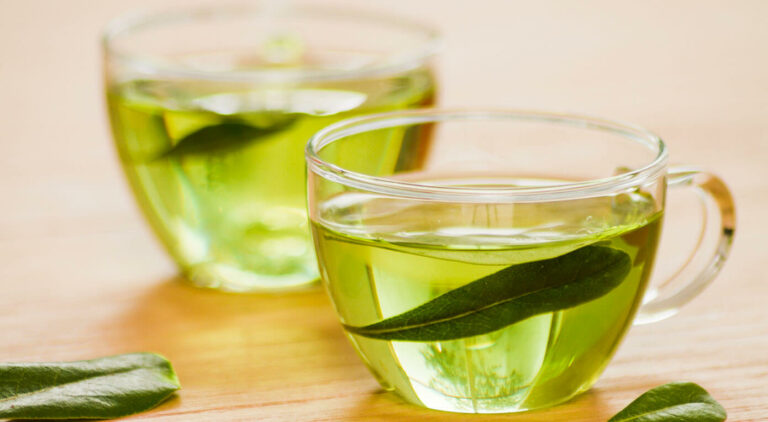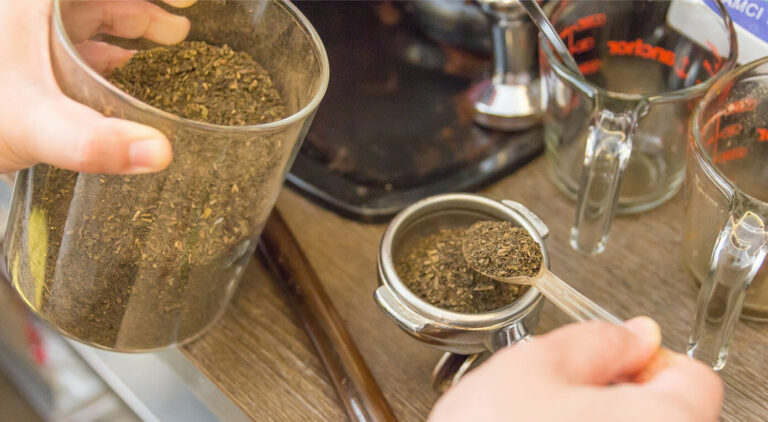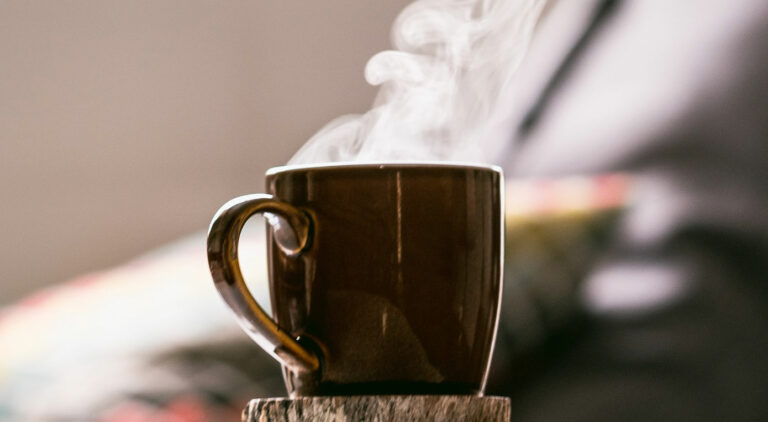Your Complete Guide to the Best Loose Leaf Green Tea (Updated 2022)
Have you ever wondered what the best loose leaf green tea out there is? In the world of green tea, there are many types of loose leaf tea, each designed to produce different flavors. Of these varieties, green tea remains one of the most popular options in countries around the world [1]https://www.fao.org/3/i4480e/i4480e.pdf. That’s also due to the many health benefits of green teas. However, with so many different varieties of fresh green teas out there, knowing which one will be best for your needs can be tough.
Basics of Loose-Leaf Teas
Coming from the tea plant known as Camellia Sinensis, loose-leaf green tea contains more concentrated flavanols. Flavanols have antioxidant properties and have been associated with overall health benefits including cardiovascular and cognitive health.
Loose leaf tea is produced by steaming or pan-firing the tea leaves allowing them to oxidize which in turn produces extra flavanols. This process differs from the production of tightly packed leaf tea, which is made from dried, rolled, and shaped leaves that force out water when compressed during packing.
Loose-leaf green tea is different from green teas you may be familiar with although not all loose leaf teas are green. Varieties such as white tea and black tea are considered to be loose leaf teas just like more fruit-forward varieties such as jasmine green tea.
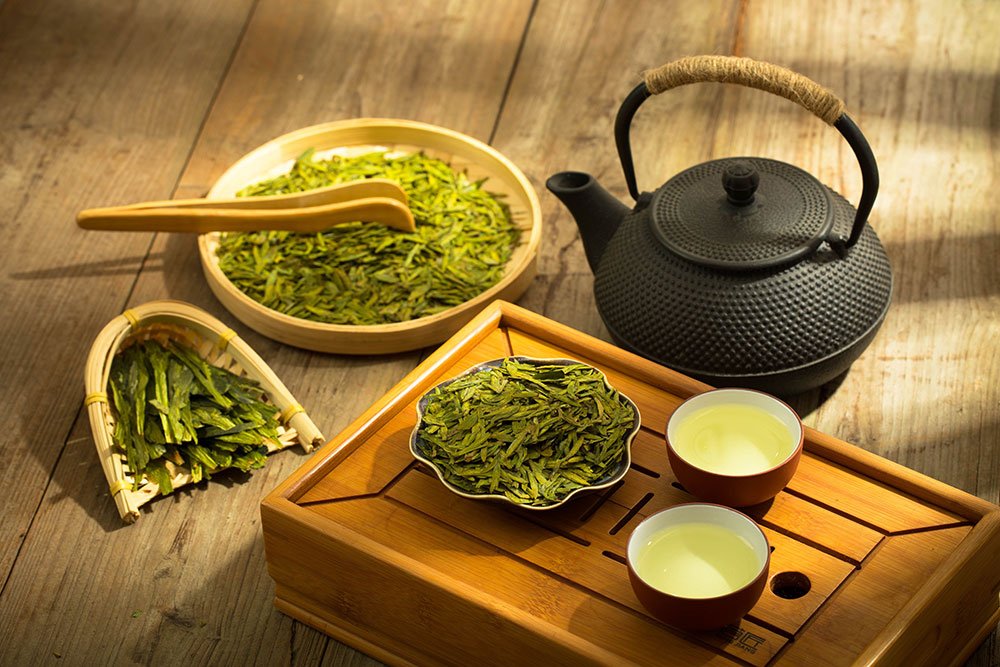
Best Japanese Green Teas
Sencha Green Tea
If you think green tea tastes astringent, you’ll be pleasantly surprised by one type of green tea called, Japanese sencha tea. It has a more complex flavor profile than Chinese varieties, but it is still bright, fresh, and vegetal. Many people who dislike green tea end up loving Japanese sencha.
Sencha Green Tea Leaves
Grown throughout Japan except for Hokkaido Island in the north; Kyushu Island in southwest Japan has several famous regions for producing sencha including Kagoshima and Fukuoka prefectures; the most common form of tea in Japan; steamed leaves that have been rolled into needle-like shapes and then dried; some varieties are mixed with roasted rice (genmaicha)
Types of Japanese Senchas: There are many grades of high quality loose leaf sencha tea available from different regions of Japan — Fukuoka Prefecture on Kyushu Island with Yame City being particularly famous for producing some of the best quality senchas due to its ideal climate and soil conditions; Kagoshima Prefecture on Kyushu also produces high quality senchas as well as Okinawa Island closer to mainland Asia.
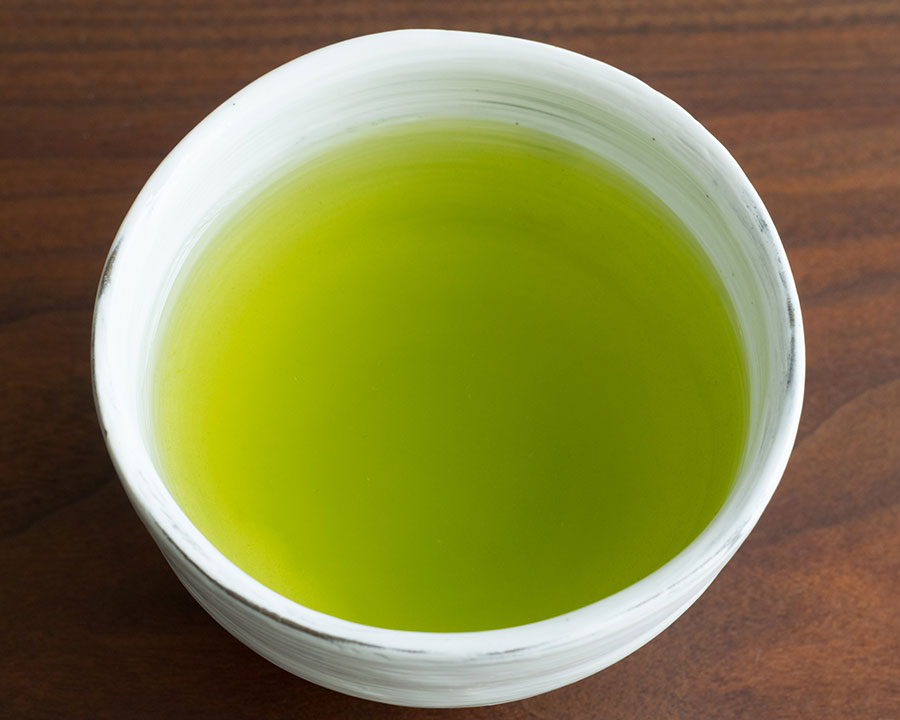
Sencha Green Tea Taste
Japanese sencha is a type of tea that brews up a medium to light yellow-green color depending on how long the leaves are steeped. It is a cloudy, richly colored liquid with a delicate flavor of slight sweetness and grassy notes. Other ingredients can be added to increase the depth of fresh flavor, particularly roasted rice (genmaicha) and powdered matcha which both give the tea an additional nutty taste.
Sencha is often used as a base for flavored teas like jasmine or lemon since its natural taste is milder than the herbal teas that are commonly used in America. It makes a great iced tea too!
Gyokuro
Gyokuro green tea is one of the rarest and most expensive types of tea in the world. It is harvested from the same plant as regular green tea, but it has to meet certain requirements to be considered authentic:
- The tea leaves must be shaded for about three weeks before harvesting, which reduces photosynthesis and increases chlorophyll levels in the leaves. This process also prevents the leaves from being exposed to direct sunlight, which would cause them to oxidize and lose some of their flavors.
- The tea leaves are hand-picked by expert harvesters who have been trained for years in order to identify only the finest-quality leaves for harvesting.
- Gyokuro green tea must be brewed with cool water (about 70 degrees Celsius), rather than boiling water like most other kinds of green teas.
- Gyokuro has a rich flavor that’s described as sweet, mellow, and buttery—all because of its unique cultivation process!
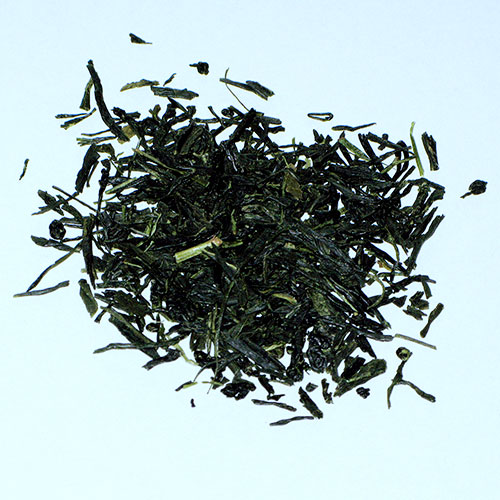
Gyokuro green tea is a type of green tea that has been cultivated in Japan for hundreds of years. It is one of the most expensive varieties of green tea on the market because it requires such a painstakingly long process to create. It’s also known as “jade dew” or “jade dew drops,” because the tea leaves have a beautiful green color, and because the tea itself has a sweet taste that feels like drops of dew on your tongue.
To produce Gyokuro, the tea plant is grown in shady areas at high altitudes and comes from the first harvest of the year. The leaves must be shaded from direct sunlight for 20 days before harvesting, which means that they are only exposed to indirect sunlight during this time period. The leaves are harvested at night and steamed immediately after being picked, so they don’t oxidize and turn brown during processing. This gives this variety of green tea its distinctive flavor and color.
This process makes them more tender and gives them their rich, sweet flavor when brewed. Gyokuro is also known for having less bitter flavors or less astringent than other varieties of green tea, making it a perfect choice for those who don’t like strong flavors or bitter taste in their beverages.
Gyokuro has a higher level of amino acids than other types of green teas, which gives it a deeper flavor and more antioxidant properties than other green teas. In fact, gyokuro has more than twice as many antioxidants as oolong or black teas!
Some people prefer to brew gyokuro with an unfiltered water source so that they can experience all the subtle nuances within each infusion; others prefer filtered water so that they can get all those same subtleties without any sediment getting into their cup (which is actually quite common when brewing with unfiltered water).
Gyokuro is prepared using loose-leaf or powdered form in a manner similar to other teas. It’s also sometimes brewed using an old-fashioned paper filter called kyusu to make a thick, rich brew called chumushi (literally meaning “thick soup”).
Gyokuro tea leaves are known for their dark green color and sweet taste. The infusion is deep yellow with a hint of gold and has a smooth, mellow flavor with notes of nuts and citrus.
If you’re new to gyokuro, we recommend starting out by brewing it with a water temperature of around 160 degrees Fahrenheit for about one minute. You’ll get an infusion that’s less bitter than more traditional green teas while still getting all the benefits: antioxidants, vitamins, minerals… you name it! If you’re looking for something more intense, try brewing this tea at 180 degrees Fahrenheit for two minutes instead!
Matcha
Matcha is a type of green tea powder that has been used in Japan for hundreds of years. It’s made by grinding up whole green tea leaves into a fine powder. It can be consumed as-is or mixed with hot water to make tea. It has been used as a medicinal drink in China and Japan for centuries. Matcha is made from the leaves of the Camellia Sinensis plant (the same species used to make all other teas).
The best Matcha tea comes from the first harvest of the year, which occurs between April and May. The second harvest occurs between July and September. It’s important to know that the best Matcha is grown in shade for about three weeks before being picked. This helps the leaves develop more chlorophyll, which is what gives Matcha its green color. It’s processed by grinding the leaf into a fine powder, which also gives it a deep green color and an earthy taste.
This tea has more caffeine than other types of green tea and has been shown to have healthy acids such as phenolic acid. This contributes to many health benefits, including improved focus and concentration, better mood, and increased energy levels.
Matcha has been used in Japan for centuries as a ceremonial tea that is consumed by Buddhist monks. The monks would drink this tea as part of their morning ritual, which helped them stay alert during long meditations. Matcha was also used to treat fatigue and improve mental clarity among other things.
Unlike other teas, matcha is not steeped in water; instead, it is whisked into hot water with a bamboo whisk called a chasen.
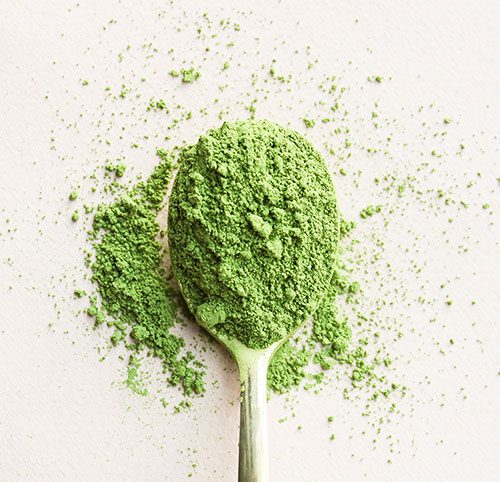
A common misconception about matcha is that it’s just another name for ground-up tea leaves (like regular green tea bags). While this is true, it isn’t quite accurate: the leaves used in making matcha are grown specifically for this purpose and have been specially picked by hand. In addition, they are ground into a much finer powder than regular green tea bags are—so fine that when added to water they dissolve completely into an opaque liquid rather than just floating around at the bottom.
How does Matcha taste?
The taste of matcha depends on the quality of the ingredients and their processing. The best-tasting matcha will be smooth, buttery, and sweet with notes of grassiness and freshness from the natural chlorophyll found in the tea leaves. The flavor of Matcha is usually described as slightly bitter with a smooth finish.
Hojicha
Hojicha tea is a type of roasted green tea that is made by roasting bancha leaves at a high temperature. The leaves are roasted for about 30 minutes and then ground into a powder. The resulting drink is sweet and nutty in flavor, with hints of caramel, chocolate and earthy notes.
This process helps to produce a darker color and smoky flavor, which gives it a different taste from regular green tea; instead of being bitter like most other types of teas, hojicha has an earthy flavor that can be described as a”well-rounded.”
The leaves used in hojicha are typically picked later than those used for other teas because they are higher in tannins—and therefore more bitter—than younger leaves. These leaves are then carefully roasted at low temperatures to create a rich brown or black color and full-bodied taste that can be enjoyed hot or cold (depending on your preference).
Hojicha is known for its mellow and mild flavor, which makes it an excellent choice for people who aren’t accustomed to drinking green tea. The roasted leaves are also less likely than the unroasted leaves to have astringent tannins that can cause mouth irritation in some drinkers.
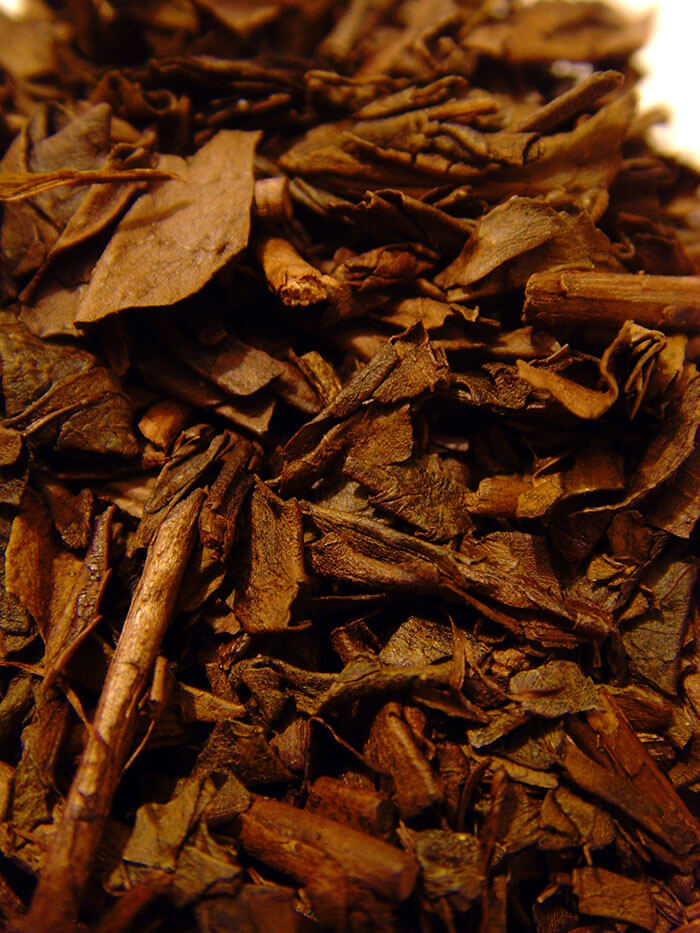
The taste of hojicha is similar to roasted coffee beans but much lighter than coffee. It has a very subtle sweetness that balances out its bitterness, making it more approachable than most other green teas.
Hojicha has been used as a medicinal tea in Japan for centuries. It’s also known as “roasted tea” or “charcoal tea,” because the leaves turn black when they’re roasted. The color comes from the tannins in the tea leaves being oxidized during the roasting process, which gives Hojicha its darker color compared to other green teas.
It’s been said that Hojicha has more antioxidants than other types of teas because it’s been roasted at higher temperatures than other green teas. Studies have shown that these high levels of antioxidants can help reduce inflammation in your body and help fight cancer cells too! So if you’re looking for an antioxidant boost without getting your caffeine fix in the morning then Hojicha may be just what you need!
Genmaicha
The Genmaicha Tea Taste
Genmaicha, also known as brown rice tea or popcorn tea, is a Japanese brown rice green tea that you can enjoy any time of day. It’s made from green tea leaves and roasted brown rice kernels. It has a slightly nutty flavor and is popular in Japan for its health benefits, especially for those who are watching their weight or want to improve their digestion.
The History of Genmaicha Tea
Genmaicha was first developed during the Meiji period (1868-1912) when Japan was opening up to foreign trade and many new foods were being introduced into the country. The Japanese people began blending green tea with roasted brown rice kernels to make this new drink. The name comes from “genmai” which means “brown rice” and “cha” which means “tea.” Genmaicha became very popular during World War II because it was cheap to produce and easy to store without refrigeration because it had no milk or cream added in!
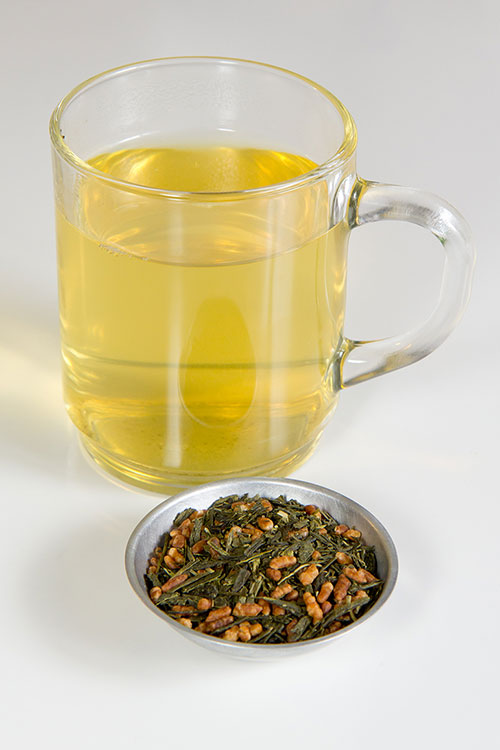
The way you brew Genmaicha is different than other teas because it’s brewed with all three ingredients at once. For example, if you wanted to make one cup of Genmaicha, you would put 1 tsp of green tea leaves, 1 tsp of brown rice, and 2 tsp of roasted brown rice into your teapot or cup. Then you would fill it with water and let it steep for 3-5 minutes depending on how strong you want your tea to be.
One thing that sets Genmaicha apart from other teas is that it doesn’t have an overpowering flavor as some other green teas do. This makes it perfect for people who don’t like strong flavors like black or oolong teas but still want a refreshing drink that’s full of antioxidants!
Kukicha
Kukicha tea is a Japanese green tea that has been processed in a way that preserves the nutritious leaves of the plant. The most common form of kukicha is made from the twigs and stems of the tea plant, which are roasted before they’re dried.
This process gives kukicha its darker color and nutty flavor. It’s one of the healthiest teas you can drink because of its high antioxidant content and nutritional value.
Kukicha is also known as twig tea, bancha, or kuiku. It has less caffeine than other green teas, so it’s great for people who need to stay alert but don’t want to feel jittery from drinking coffee or other caffeinated beverages.
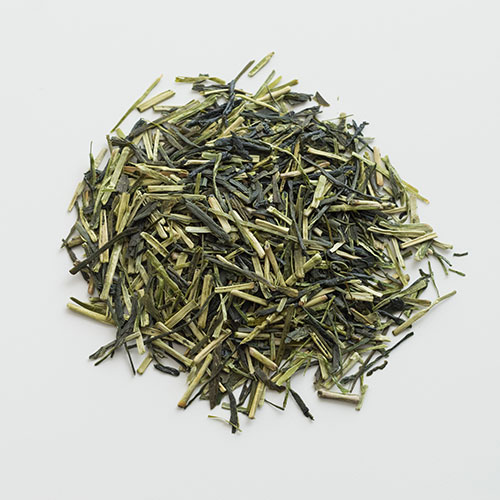
The Health Benefits of Kukicha Tea
There are many reasons why you should drink kukicha tea regularly. Based on the book The Everything Guide to Macrobiotics by Julie S Ong and Lorena Novak Bull, twig tea contains six times more calcium than cow’s milk, hence it helps you build bone density.
It also contains polyphenols called catechins that can increase your metabolism by stimulating fat-burning enzymes in your body while suppressing appetite hormones like ghrelin (the “hunger hormone”). This can help with weight loss and boost energy levels.
Konacha
Konacha is a Japanese green tea that is made from the buds of the tea plant. It has been grown in Japan for centuries, but it is currently enjoying a resurgence in popularity thanks to its unique taste and health benefits.
What are Konacha tea leaves?
Konacha tea leaves are made from the buds of the Camellia sinensis plant, which is native to China. The word “konacha” refers to a specific type of processing method used with these buds, which involves steaming them before drying them out completely. This process helps bring out their flavor, while also preserving as many nutrients as possible.
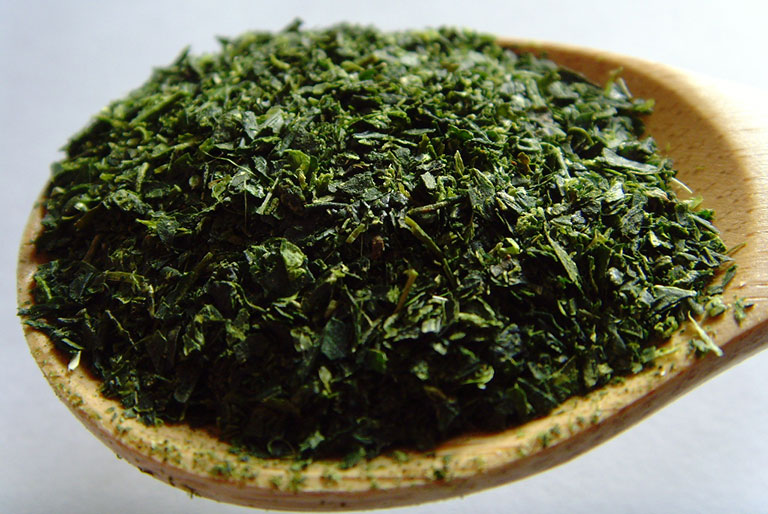
How do you make Konacha tea?
Konacha tea preparation follows a similar process to other types of green teas: You steep the leaves in hot water for about three minutes until the color turns pale yellow or light green (this will depend on how darkly roasted they were). Once they’re done steeping, you can add sugar or honey if desired.
What are some health benefits of Konacha tea?
Konacha tea has been proven to have many health benefits thanks to its high levels of antioxidants and minerals like zinc and manganese. These properties help promote better digestion.
Best Chinese Green Teas
Gunpowder Tea
What is Gunpowder green tea?
Gunpowder green tea is a type of green tea that was first produced in China. It’s made from the leaves of Camellia sinensis, which are dried and rolled into small pellets before they are roasted. The pellets are then fired in ovens or kilns to further dry them, giving them their signature dark color and smoky flavor. Gunpowder green teas are often called “pearls,” due to their appearance when they’re brewed.
How is Gunpowder tea made?
Gunpowder tea was originally created as a way for people to make use of old leaves that were no longer suitable for making other types of tea. The process involves rolling the dried leaves into small pellets and heating them until they become almost black (but not actually burned). This process gives them their characteristic dark appearance, which can vary from light brown to very dark brown depending on how long they were heated during the roasting process.
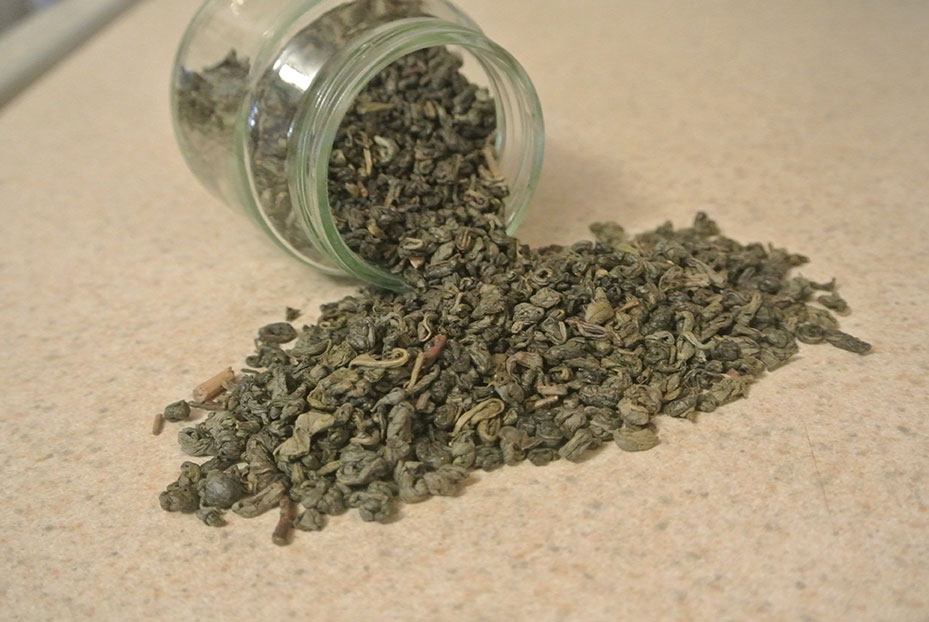
Gunpowder Tea Taste
The flavor of Gunpowder green tea can vary depending on where it’s grown and how it’s processed. If you’re looking for a traditional flavor profile, look for a Chinese green tea with a medium to a strong body and a sweet aftertaste. Other varieties can be more earthy or robust, depending on what kind of flavors you prefer! Whatever your preference is, Gunpowder is sure to have something for everyone!
Dragon Well or Longjing Tea
Dragon Well (or Longjing) is a type of green tea that originates from the West Lake in Hangzhou, China. It is named for the dragon-like shape of the leaves. The Dragon Well tea plant was first cultivated in the early 8th century and is now grown all over China, but it’s most famous for being grown around West Lake in Zhejiang province.
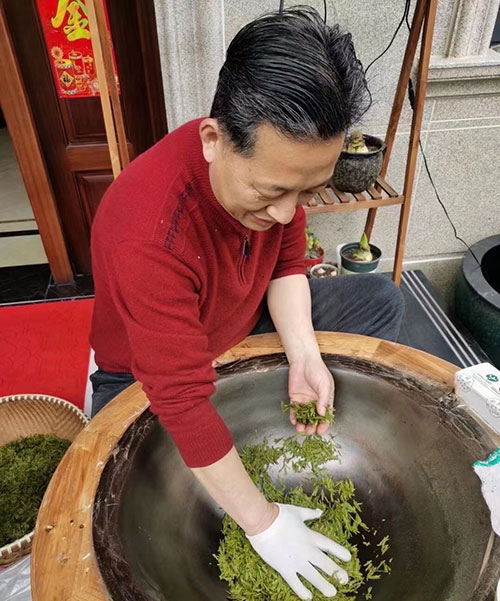
The tea undergoes three stages: first, it’s steamed with mineral water to prevent oxidation; then it’s rolled into pellets; and finally, it’s dried out in ovens or on racks until it reaches its signature green color.
Dragon Well Green Tea Leaves
The Dragon Well leaves are long and narrow, with a pointed tip and wavy edges. They’re covered with fine hairs called “pekoe,” which gives them their unique appearance. They have a bright green color that ranges from light yellowish-green to dark emerald green, depending on how long they’ve been exposed to heat during processing.
Dragon Well Green Tea Taste
Dragon Well Green Tea has a strong aroma and hints of peach and apricot. It has a sweet flavor with notes of honeydew melon, cucumber, jasmine blossoms, peonies, bergamot orange peel and rose buds.
Best Organic Loose Leaf Green Teas
Organic green tea is a delicious, healthful beverage that can be enjoyed any time of day. Whether you’re looking for a cup of hot tea or something to enjoy on a warm summer day, organic green teas offer a wide variety of flavors and aromas to fit your tastes.
The term “organic” refers to a process used when growing a plant that uses natural fertilizers and pesticides instead of man-made chemicals. This process helps preserve the environment by avoiding runoff into nearby bodies of water and reducing pesticides in our air and water supply.
For this reason, many people prefer organic foods over conventionally grown options, which are often treated with chemicals designed to kill pests or reduce weeds without harming humans or animals (which can lead to contamination in our food). Organic green tea is no exception—it’s an excellent choice for anyone who wants to drink healthy beverages made from organically-grown plants.
Organic green tea leaves are typically harvested by hand, which makes them more expensive than other types of tea leaves.
The best organic green tea brands come from China and Japan, but they’re available throughout the world.
Verdict: Best Loose Leaf Green Teas
Now that we’ve explored the best Japanese green teas, best Chinese green teas, and best organic green teas, there’s no one tea that’s a clear winner. But there are a number of popular green teas that share the top spot.
In general, if you are looking for premium green teas, go for the best green tea brands such as Vahdam Teas. This brand carries pure green tea and Matcha green tea powder that is sourced from only organic tea plantations in Darjeeling.
Overall, the best types of green tea depending on your preferences and if you are consuming them for health reasons or not. Matcha has been studied as the healthiest tea of all green teas so far [2]https://pubmed.ncbi.nlm.nih.gov/19735169/. Drinking a cup of green tea before bed will help you relax and unwind stress levels from the day.
References
